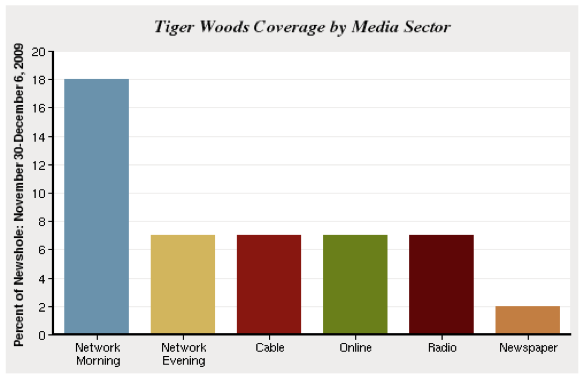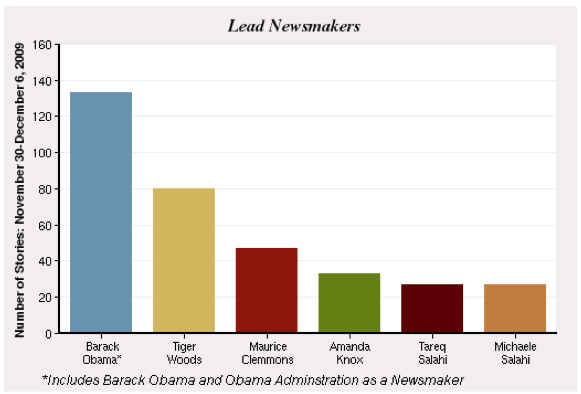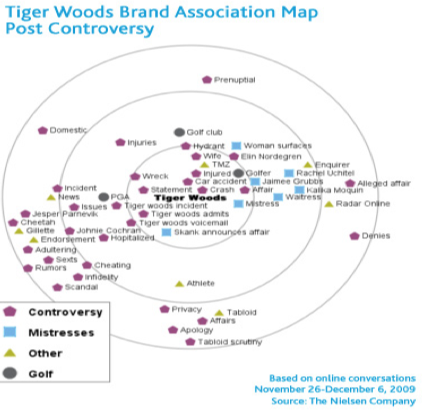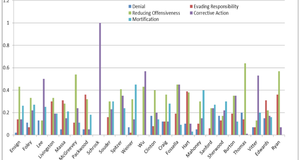From Elon Journal of Undergraduate Research in Communications VOL. 3 NO. 2Crisis Management and Sports in the Age of Social Media: A Case Study Analysis of the Tiger Woods Scandal
IN THIS ARTICLE
KEYWORDS
AbstractTiger Woods saw his reputation crumble as reports of infidelity leaked to the press in November of 2009. This research evaluated the crisis management strategies of Woods and his crisis management staff, as well as social media's role and reaction to the scandal. The eight press statements issued by Woods between November 29, 2009, and August 23, 2010, served as the primary documents for this case study analysis. Results found that mortification was the most frequently used crisis management strategy. Despite the criticism Woods received for his handling of the crisis, social media research indicates that his team's approach has been effective in shifting online conversations away from the scandal and back to Woods and golf. I. IntroductionThe term crisis has a wide variety of definitions and interpretations. Typically, it is understood to be an extraordinary disruption of standard operations that threatens the safety, reputation and success of an organization or individual. In some instances of crises, there is an opportunity for a company or person to subdue a situation before it causes serious damage. However, too often the problem spirals out of control before it can be contained. The way in which the problem is prepared for or handled, also known as crisis management, can determine how devastating the event is to the bottom line of an organization. Though crises occur in every industry, none receive a more disproportionate share of media attention than in sports (Henry, 2008). Sports organizations and the lives of highly paid athletes are of great interest to the American people. Given the spotlight on athletics, it has become necessary for teams and players to employ crisis management staff who specialize in keeping their names out of the negative press. The growth of the Internet and social media makes the jobs of these crisis management teams more difficult than ever before. Stories, from both internal and external sources, can spread in a matter of minutes through sites like Facebook and Twitter and have the ability to impact public opinion. The present study focused on crisis management strategies and their application to the 2009 Tiger Woods scandal. A case study analysis was conducted of Woods' official press statements following the scandal to evaluate what strategies and tactics his crisis management team used and how successful they were in restoring Woods' image. This review relied upon prior research of crisis management and image restoration techniques (Burnett, 2002; Caywood & Stocker, 1997; Coombs, 2007; Curtin, Hayman & Husein, 2005; Fink, 1986; Gottschalk, 2002; Larsen & Massey, 2006; Mitroff, 2000) as well as the development of social media (Cross, 2011) and its impact on sports scandals (Brown, Dickhaus & Long 2012; Davie, King & Leonard, 2010; Henry, 2008; Len Rios, 2010; Phua, 2012; Reed, 2011; Teitelbaum, 2010). II. Literature ReviewDefinition of Crisis and Crisis ManagementAccording to Steven Fink, crisis is defined as "an unstable time or state of affairs in which a decisive change is impending—either one with the distinct possibility of a highly undesirable outcome or one with the distinct possibility of a highly desirable and extremely positive outcome" (1986, p.15). Some experts on the subject have placed emphasis on the idea that crises create as much opportunity for organizational perseverance and growth as it does for failure (Burnett, 2002; Fink, 1986). There are three basic categories with which all crises are classified: crises that befall an organization or individual, those that are manufactured, and those that escalate from an accident (Curtin, Hayman & Husein, 2005). For an incident to qualify as a fullblown crisis, the situation must be "escalating in intensity, falling under close government or media scrutiny, interfering with normal business operations, jeopardizing public image and damaging a company's bottom line in anyway" (Fink 1986, p.15). Crises can range from industrial accidents to sex scandals to company lawsuits and have the potential to threaten public safety, as well as reputation and financial loss (Coombs, 2007; Larsen & Massey, 2006). According to Caywood and Stocker, a crisis and how it's managed can be the "life-or-death difference for a product, career or company" (1997, p. 189). The purpose of crisis management is to prevent or minimize the damage of an organizational crisis at all costs. Effective crisis management involves a combination of pre-crisis preparation and post-crisis action. In the past, prior to the world of instant communication, handling these situations could be deliberate and well thought out. Organizations had time to draft responses and arrange for legal consultation before dealing with media. That has obviously changed with the rapid development of the online community and the demand for immediate answers. Given the many interpretations of crisis and the ever-evolving forms of communication, it is difficult for experts to agree on a universally applicable crisis management approach (Larsen and Massey, 2006). There are, however, some generally accepted components to it. Stages of CrisesAll crises have a lifespan. There are patterns of when they begin, worsen, plateau and return to normalcy. Experts on crisis management have debated how exactly to classify these different stages of a crisis. Fink (1986) established a generally accepted four-stage model that can be applied to all situations. The prodromal crisis stage is the initial stage of any crisis, where warning signs may be apparent. The creation of a crisis management plan (CMP), discussed later in the review, can help an organization identify the warning signs of a crisis in this early stage. If a crisis is flagged at this stage, the organization can recover more easily than otherwise. Next is the acute crisis stage. Once an event has reached this stage, damage has been done. The amount of damage depends on how swiftly and appropriately a crisis management team can react. An organization's goal in this stage is to control details like how or when the story is released (more easily done with a CMP). Third is the chronic crisis stage, which is all about regrouping and recovering after the crisis. Depending on the success of the crisis management team, this stage, the longest of the four, can be met with celebrations or total staff overhaul. Lastly, the crisis resolution stage signals the successful recovery of an organization or individual. Business operations return to normal. However, employees need to be aware that crises are cyclical and have a tendency to reappear in the future. Crisis Management PlansAs previously mentioned, a critical element to successfully navigating any crisis is the development of a well-organized crisis management plan (CMP) (Caywood & Stocker, 1997; Coombs, 2007; Fink, 1986; Henry, 2008). A CMP functions as a short guideline or contingency plan, should any crisis arise. Caywood and Stocker (1997) described a CMP as a step-based plan that prepares for the dynamic changes of a crisis. It includes decisions like who to contact, what resources will be needed, and how and when to handle the media. Businesses of all sizes, regardless of industry, need to have a CMP established and updated annually. John Burnett stated that "50 to 70 percent of the largest profit-making organizations, surprisingly, do not have a written disaster plan" (2002, p. 7). It is often companies that do not have CMPs in place that suffer the most following a substantial crisis. Organizations should prepare by looking at past crises related to their industry and identifying trends, and determine what the warning signs were and the techniques that were previously effective (Mitroff, 2000). According to Ian Mitroff, companies should produce CMPs for at least one crisis in each of the following categories: informational, economic, physical, human resources, reputational, psychopathic acts and natural disasters. But before establishing a CMP, there must be a crisis management team (CMT) in place. This is a group of employees, ideally from various departments, that will be responsible for developing the CMP and implementing it (Curtin, Hayman & Husein 2005; Fink, 1986). Fink found it is not uncommon for companies to either outsource their crisis management, or to bring in consultants that simulate crisis scenarios and evaluate the performance of the CMT. Studies have shown that very few companies, even those with CMPs, have actually practiced their plan and made adjustments according to its success (Larsen & Massey, 2006). While the CMP should be thorough, it is important for staff to not get distracted in its specific details. The plan is designed to be broad, but should help companies avoid making major decisions in the "heat of the moment." The growth of instant communication requires organizations to respond with speed; avoiding the media for too long can be viewed as deceptive. It is common that when decisions or speech are rushed, responses can be inadequate and therefore, detrimental to the resolution of the crisis. Social Media's Impact on Crisis ManagementCrisis management has always been a difficult task. However, it is safe to conclude that the development of social media amplifies the challenges facing crisis management teams today. In Mary Cross's book, "Bloggerati, Twitterati: How Blogs and Twitter are Transforming Popular Culture" (2011), she discussed the birth of social media and the impact it has had on communication. Twitter, a social media site created by Jack Dorsey in 2006, allows users to post 140 character updates on any topic they choose. As of March 2011, Twitter had over 300 million users with about 140 million tweets posted daily. That comes out to almost a billion tweets a week. The site allows for the rapid dissemination of information and has become a resource for bloggers, analysts and journalists alike. Facebook, another popular social networking site, was launched by Mark Zuckerberg in 2004. It allows users to create profile pages, where they add photos and share links and comments on various topics with friends. According to Sada Reed's article in the Journal of Sports Media (2011), Facebook had more than 500 million users as of May 2011. The development of social media and its high levels of user participation, though beneficial to mass communication, creates two dilemmas for organizations or individuals dealing with a crisis. First, messages and stories can spread instantaneously. The primary concern is no longer what the New York Times will write about you in the newspaper tomorrow—but what will be written 15 seconds from now online. The speed of online communication makes it more challenging for the crisis management team to get out in front of a story (Gottschalk, 2002). It allows for the prolonged discussion of any scandal. The other problem these sites pose for organizations is that internal members can post information that reflects poorly on the company, creating or augmenting a crisis entirely on its own. Given that sports fans reportedly spend 13 hours online each week searching for information on their favorite teams and players, it is almost guaranteed that anything published on these sites will be seen and spread fast (Phua, 2012). It is after a crisis has broken that a CMT is forced to employ a series of crisis management or image restoration strategies to minimize the damage. Best Practices and StrategiesThere are several basic words of advice for any crisis management team: be quick, accurate and consistent (Coombs, 2007). It is often difficult for an organization to manage both speed and accuracy simultaneously unless previous preparation for a crisis has been done. Initial response is critical, as every sound bite, interview, or press conference will be available for replay on YouTube. There are five well-accepted categories of crisis management responses, including non-existent strategies, distance strategies, ingratiating strategies, mortification strategies, and suffering strategies (Brown, Dickhaus & Long, 2012; Coombs, 2007; Larsen & Massey, 2006; Len Rios, 2010). With non-existent strategies, CMTs look to avoid any ownership of wrongdoing by denying, clarifying, or attacking claims of fault on behalf of the organization (Larsen & Massey, 2006). Next are distance strategies. With distance strategies, the goal is to remove any association of the company with the crisis (Larsen & Massey, 2006). Distance can be created through a series of excuses or justifications. Justifications involve minimizing the perception of damage (Coombs, 2007). Third are ingratiating strategies that aim to generate support on issues beyond the crisis event, including bolstering and transcendence. Bolstering is defined as the attempt to create credibility based by referencing prior good behavior (Brown, Dickhaus & Long, 2012; Len Rios, 2010). On the other hand, transcendence, which is used to deflect attention onto something else, is placing a fact or sentiment in a larger context that viewers are not currently seeing (Brown, Dickhaus & Long, 2012). Mortification strategies are strategies that admit involvement and simply request public forgiveness for the issue, specifically involving remediation, repentance, and rectification (Larsen & Massey, 2006). Mortification is also commonly referred to as atonement. Last are suffering strategies, which are used in an attempt to garner public sympathy (Larsen & Massey, 2006). It is up to the CMT to determine which strategies will be most effective given the situation and audience. Often, the type of strategy may change over the lifespan of the crisis. Crisis management and image restoration take on a bigger role in today's society, specifically in sports, due to the increased media coverage of athlete scandal (Teitelbaum, 2010). No sports story is too small or insignificant for social media users to grab a hold of. Considering that an athlete's public image is worth more monetarily than it ever used to be, the ability to successfully implement these strategies and control how a story spreads is a highly valuable skill (Brown, Dickhaus & Long, 2012). Research QuestionsIn considering the basic principles of crisis management and their role in the 2009 Tiger Woods scandal, this case study aimed to answer the following questions: RQ1: What crisis management strategies were used most frequently following Woods' scandal? RQ2: How did the type of strategies used change throughout the life cycle of the crisis RQ3: What was the reaction to the crisis on social media and did it differ from traditional media coverage? RQ4: What effect, if any, did Woods' crisis management approach have on public opinion and company sponsorship?Continued on Next Page » Suggested Reading from Inquiries Journal
Inquiries Journal provides undergraduate and graduate students around the world a platform for the wide dissemination of academic work over a range of core disciplines. Representing the work of students from hundreds of institutions around the globe, Inquiries Journal's large database of academic articles is completely free. Learn more | Blog | Submit Latest in Business & Communications |






















